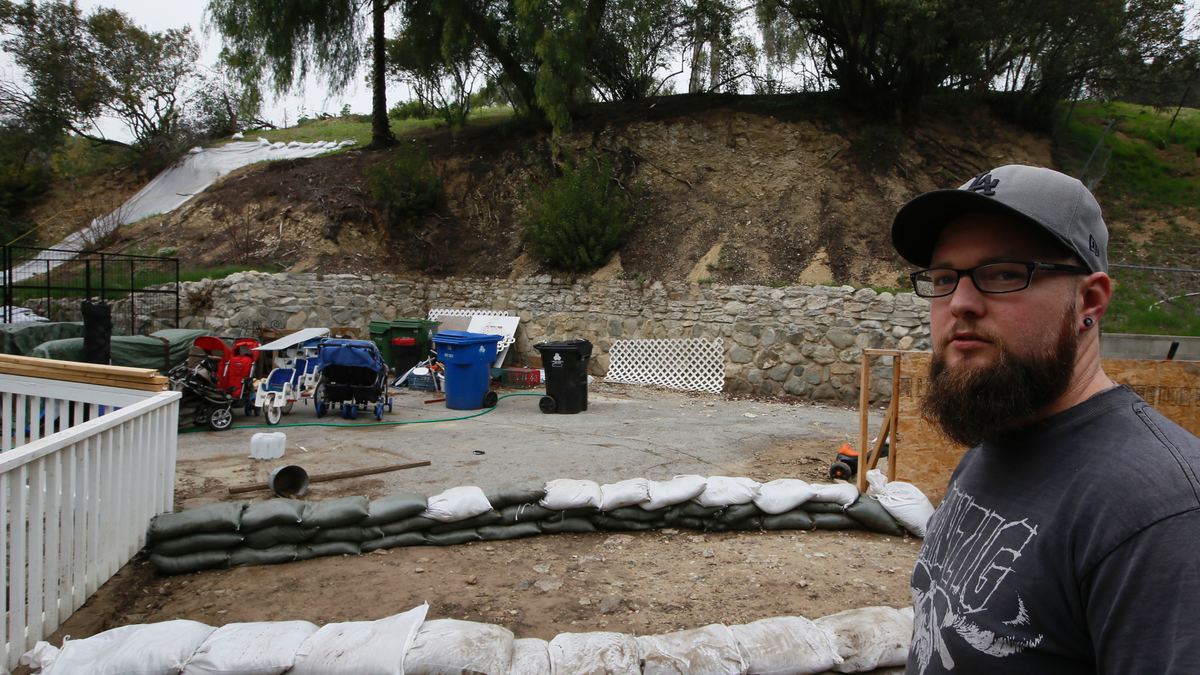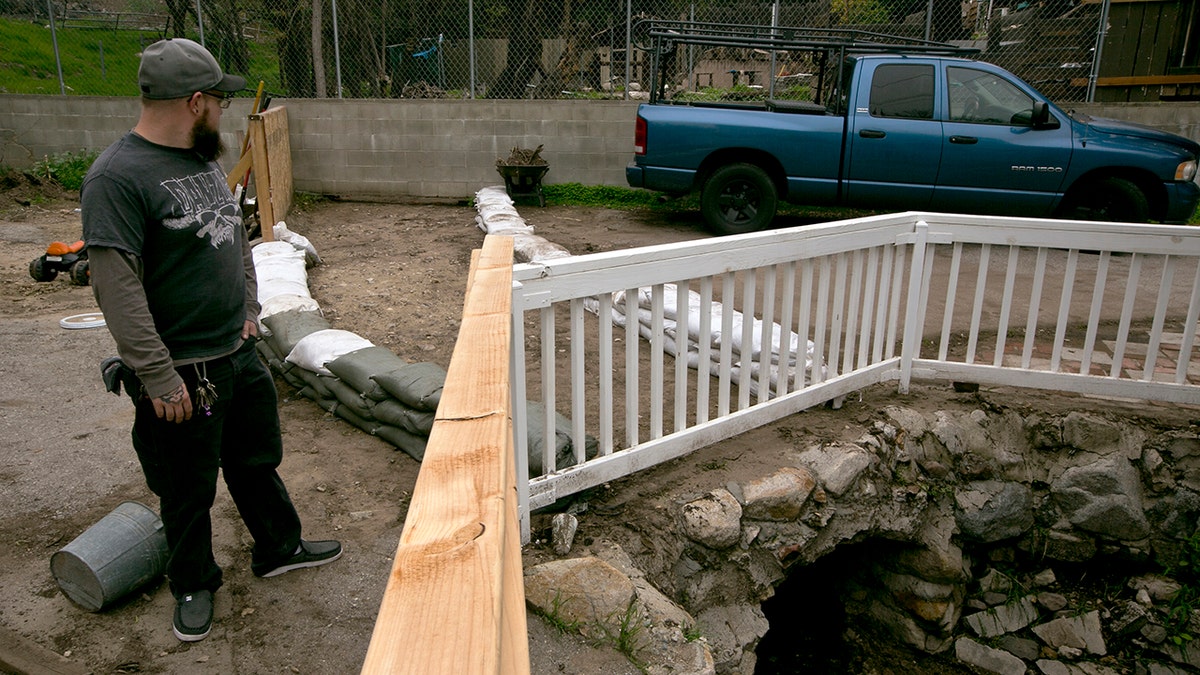
Andrew Joos-Visconti protects his home from the upcoming rains with sand bags in the Sun Valley area of Los Angeles Tuesday, March 20, 2018. (AP Photo/Damian Dovarganes)
Authorities ordered tens of thousands of people to flee their homes as a powerful storm headed toward California, where many communities on Tuesday face the threat of flooding and destructive debris flows from areas burned bare by huge wildfires.
An atmospheric river — a huge plume of subtropical moisture — took aim at the state's central and southern coast, where the wealthy community of Montecito near Santa Barbara is still trying to recover from a January storm that unleashed mudslides from a vast burn area, swamping homes and killing 21 people.

Andrew Joos-Visconti works to protect his back yard from the upcoming rains with a plastic tarp, in the Sun Valley area of Los Angeles Tuesday, March 20, 2018. At right, his daughter, Scarlett, 4. (AP Photo/Damian Dovarganes)
The storm was expected to arrive during the night and last through Thursday, bringing 2 to 5 inches of rain to coastal areas and valleys, and 5 to 10 inches in foothills and mountains, the National Weather Service said.
Authorities told as many as 30,000 people to leave communities on the south coast of Santa Barbara County, where mudslides from a Jan. 9 deluge destroyed or damaged hundreds of homes in Montecito, killed 21 people and left two children missing. Authorities also ordered evacuations in parts of neighboring Ventura County.
Kristine Sperling, her husband, their 11-year-old daughter and the family dog evacuated from Montecito on Tuesday ahead of the storm; it's the third time they've cleared out in two weeks because of weather warnings.
The Sperlings had stayed when Montecito was evacuated ahead of January's mudslide and said they'd never ignore evacuation orders again.
"It's a matter of life and death," Kristine Sperling said from Santa Barbara, where her family was staying with friends.

Andrew Joos-Visconti protects his property with sandbags from the upcoming rains in the Sun Valley area of Los Angeles Tuesday, March 20, 2018. (AP Photo/Damian Dovarganes)
The Sperlings' home wasn't damaged by the mudslide but they needed to be rescued after losing electricity, gas and water, and all the roads out of town were destroyed. The mudslide killed a beloved family friend and several neighbors.
"We're just not willing to take that kind of chance anymore," Sperling said.
Like the Sperlings, many residents of both Santa Barbara and Ventura counties have faced repeated evacuations or advisories since December, when a wind-driven fire grew into the largest in recorded state history. It scorched more than 440 square miles, destroyed 1,063 buildings and damaged 280 others.
That blaze and previous fires dating to mid-2016 set up the potential for extreme danger from storms.
Montecito resident Molly Rosecrance said she now keeps emergency rations and clothing in the trunk of her car.
"I'm tired of moving it," she told Santa Barbara news station KEYT-TV on Monday. "So if there is anything that comes down of any consequence, I might be out of my house for two weeks. I have groceries in the car to take to a friend's house and clothes."
The National Weather Service said forecasting models of the atmospheric river indicated the first 24 to 36 hours of the storm would target southern Santa Barbara County, western Ventura County and farther up the coast in San Luis Obispo County.
No evacuations were ordered elsewhere, but with burn scars scattered statewide, authorities urged people to be prepared for the storm and made sandbags available. Away from the coast, flash flood watches were to go into effect Wednesday for areas of the Sierra Nevada and mountains in the interior of Southern California.
Along with the hazards, the storm had the potential to help boost water supplies in the central coast region, where drought conditions have recently gone back to extreme or severe levels.
In the Sierra, where snowpack is a key portion of the state's water supply, U.S. Drought Monitor classifications range from abnormally dry to moderate drought. The most recent state measurement of the snowpack found its water content 39 percent of normal early this month, before storms brought blizzard conditions and even avalanche danger.

